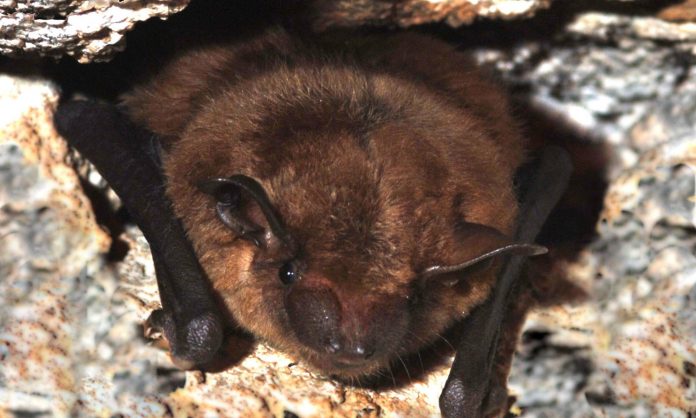
Bats, bees, butterflies and bobwhites … it sure doesn’t seem like that long ago, but who am I kidding – it was when I was quite a bit younger when I could remember these wonderful creatures in nature and thought nothing of it.
I remember hearing the call of a bobwhite quail, seeing plenty of butterflies and bees all throughout the summer, and I never gave a worry about ticks. Then, as the sun set, those winged creatures we called evening bats came around and ate the mosquitoes that we hated. I never realized how good we had it growing up.
Most people know about the desperate need to help the pollinators as bees and butterflies have decreased significantly. I would like to address the only flying mammal — the BAT.
Bats, those nocturnal marvels of the sky, are facing unprecedented challenges that threaten their existence. From climate change to white-nose syndrome, these factors are pushing many bat species to the brink of extinction. Amidst this struggle for survival, understanding why bats matter is crucial for our own well-being and the health of our ecosystems.
The silent sufferers
Bats are incredibly sensitive to environmental changes, making them early indicators of ecosystem distress. Climate change disrupts their habitats, altering temperatures and precipitation patterns critical for insect populations — a primary food source for many bats. As these patterns shift, bats struggle to adapt, leading to declines in their numbers.
Adding to their woes is white-nose syndrome, a fungal disease that has ravaged bat colonies across North America. Named for the white fungus that grows on affected bats’ muzzles and wings, this disease disrupts hibernation cycles, causing them to burn crucial fat reserves needed for winter survival.
Since its emergence in 2006, white-nose syndrome has decimated millions of bats and continues to spread, leaving devastated bat populations in its wake.
Guardians of the night
Beyond their mysterious allure, bats play indispensable roles in maintaining the delicate balance of our ecosystems. As voracious insectivores, bats provide natural pest control services worth billions of dollars annually in agricultural savings.
By consuming vast quantities of insects, including crop pests like moths and beetles, bats help farmers reduce the need for chemical pesticides — a boon for both the environment and our food supply.
Moreover, bats are crucial pollinators for numerous plant species, including some economically important crops like bananas, mangoes and agave (used in tequila production). By spreading pollen as they feed on nectar, bats facilitate plant reproduction and contribute to biodiversity.
Conservation efforts
Being the optimist, I want people to know that they can make a difference, and bats are not gone yet. Recognizing the urgency of the situation, conservation efforts are underway worldwide to protect and rehabilitate bat populations. These efforts include habitat preservation, installation of bat-friendly gates in caves to prevent human disturbance and research into disease management strategies for combating white-nose syndrome.
Supporting local conservation initiatives, reducing carbon footprints and advocating for policies that prioritize habitat preservation are crucial steps we can take. Educating ourselves and others about the vital roles bats play in our ecosystems fosters appreciation and inspires collective efforts to protect these extraordinary creatures.
Bat Blitz
If you are interested in learning more about bats, now is the perfect time, as Ohio Bat Blitz is coming up soon. The 2024 Ohio Bat Blitz is Aug. 23-24 at the Grand River Conservation Campus in Ashtabula County.
Over these two nights, bat biologists and volunteers from around the state will be surveying the bat community in the surrounding areas. The purpose of the blitz is to gain valuable information about bat populations in the Grand River area, provide experience to students and young professionals and engage the public in bat conservation. More information and registration can be found at https://u.osu.edu/obwg/bat-blitz/
As I cool down in the evenings and watch the sunset, I am delighted to see a lonely bat. I recall the days when many bats would take flight in search of insects.
By safeguarding their habitats and addressing the threats they face, we not only protect biodiversity but also safeguard the services that bats provide to ecosystems and human societies alike. Together, we can ensure that bats continue to grace our night skies, so that once again we might be able to witness their splendor and enjoy the sweetness of summer.












